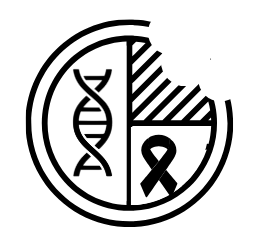Reading time: 5 minutes Anthony Tao It goes without saying that magnets have uses beyond simply pinning wedding RSVPs to your refrigerator. In medicine, magnetism is a crucial component of magnetic resonance imaging (MRI), an invaluable diagnostic tool for clinicians. An MRI subjects the human body to an enormous magnetic field ‒ perhaps a thousand-fold... Continue Reading →
Tumor-on-a-chip: A Better Method for Drug Discovery?
Reading time: 7 minutes Nayela Chowdhury Conventional 2D and 3D models of cancer have widely been utilized in pre-clinical drug development; however, neither of the platforms mimics the dynamic interactions that occur in living tumors. In vivo studies (for example, in small animal models) have been central in translational cancer research and have contributed largely... Continue Reading →
‘Ubiquitous’ Ubiquitination Pathway and Cancer
Reading time: 4 minutes Deepika Jayaprakash What is common to eukaryotic organisms like animals, plants, fungi, and unicellular organisms? Ubiquitous Ubiquitin! Ubiquitin (ub) is a small protein found in all eukaryotes that when attached to its target protein can bring about a myriad of cellular processes. The first observed effect of ubiquitination was degradation of... Continue Reading →
3D Screening of Compounds for Cancer Therapy
Reading time: 4 minutes Sydney Scatigno Over the last couple of decades, cancer research has made strides in improving the pre-clinical assessment of novel compounds. Compound screening, the process of assessing new compounds for efficacy, across various cell lines is an important step in finding the optimal drug candidate downstream in the drug development process.... Continue Reading →
A Dash of Turmeric: The Secret Ingredient for Cancer Treatment?
Reading time: 4 minutes Melanie Padalino “Do you have any spices?” my friend Elizabeth asked while cooking an omelet in my kitchen. “Yep, there should be a whole bunch in the cabinet” I replied. Without hesitation, she went straight for the little glass jar of ground turmeric, an ancient spice known for its bright orange... Continue Reading →
Metals Against Cancer: Vanadium Delivery to Neuroblastoma Cells Through Liposomes
Reading time: 3 minutes Garima Khanna Vanadium is a hard, silvery-grey, malleable transition metal. Transition metals are chemical elements that have valence electrons capable of participating in formation of chemical bonds. While the term transition has no particular chemical significance, it is a convenient name by which to distinguish the similarity of the atomic structures... Continue Reading →
Live Forever? Cancer and the Darker Side of Telomerase
Reading time: 5 minutes Brittany Avin McKelvey Many of us are enticed by the possibility of extending our lives, towards the goal of one day being able to live forever. This wish may be closer to becoming reality with the promise of some research in which the activation of only one enzyme, usually turned off... Continue Reading →
Probing Molecular Vibrations For Cancer Diagnosis
Reading time: 4 minutes Jessica Desamero Molecules can be portrayed as “ball-and-spring” models, where the balls are atoms and the springs are the chemical bonds that tether them. Just as a spring, the chemical bonds can be moved around in a variety of ways to cause masses to vibrate as well as move differently and... Continue Reading →
How can we study cancer more accurately?
Reading time: 3 minutes Rachel Cherney If you have read other articles on Oncobites, you know that cancer is a collection of many diseases, and these diseases are complex. Cancer cells don’t live on their own; rather, they live among the normal tissue cells, immune cells, and bacteria in your body. Additionally, cancer cells can... Continue Reading →
Now You See Me: Boosting Tumor Antigen Expression to induce Anticancer Immunity
Reading time: 4 minutes Manisit Das From the early days of OncoBites, we are trying to share with you the reasons we get cancer. Cancer arises when the DNA in our cells is altered due to irreparable mistakes in the cellular machinery or environmental effects. If a mistake happens in the proteins that help repair... Continue Reading →
Gold Nanoparticles – The future of cancer diagnosis and therapy?
Reading time: 5 minutes Garima Khanna Figure 1: Gold Nanoparticles Gold nanoparticles (GNPs) possess exceptional characteristics, including high surface area to volume ratio, easy synthesis, surface chemistry, multi functionalization, stable nature and surface plasmon resonance. Because of these unique properties, they are emerging as a powerful tool for early tumor diagnosis and chemotherapeutic drug delivery... Continue Reading →
Repurposing FDA approved drugs for cancer therapy
Reading time: 2 minutes Rachel Cherney *This article does not take the place of professional medical advice. Consult with your doctor* One of the most limiting aspects of drug development is the time it takes to design, optimize, and implement new drugs, which in turn limits patient treatment and survival. Unfortunately, for patients suffering from... Continue Reading →
Many Anticancer Targets Could Be A Mirage
Reading time: 4 minutes Kedar Puvar Designing new anticancer compounds is often a deliberate process, where the mechanism of action involves the blocking of a certain target, like a receptor or other cellular protein. Researchers would then optimize potential leads until a potent and effective drug is ready for clinical trials. This pipeline is considered... Continue Reading →
Human Organ on a Chip: A Better Model for Drug Development?
Reading time: 5 minutes Kaye Alcedo Even before President Nixon’s declaration of the “war on cancer” in 1971, the journey towards a cure was nothing but a rollercoaster ride. Many promising cancer drugs are tested in human clinical trials but ultimately fail primarily because they demonstrate inadequate efficacy or safety, costing billions of dollars, increasing... Continue Reading →
The Reproducibility Crisis
Morgan McSweeney As Alex Woodell recently described, the preclinical research community is in a quiet crisis. Somewhere between 50% and 90% of results from early-stage academic cancer research are unable to be reproduced by industry scientists. Studies by several large multinational pharmaceutical companies and a number of other independent research groups have confirmed what they... Continue Reading →















